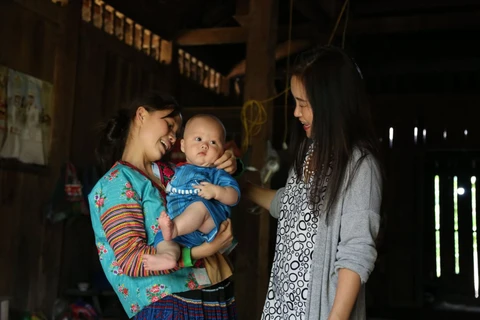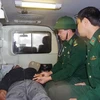Hanoi (VNA) – Vietnamese are the fourth tallest people in Southeast Asia, only after Singapore, Thailand and Malaysia, thanks to improvements in maternal and child nutrition, heard a workshop held by the Ministry of Health in Hanoi on July 28.
Dr. Tran Dang Khoa, Deputy Director of the ministry’s Department of Maternal and Child Health, said the average height for women and men rose by 3.3 and 5.8 centimeters during the 2000-2020 period to reach 155.6 centimeters and 168.1 centimeters, respectively.
Vietnamese are still getting taller over the past two decades but not as fast as others in Asia, he noted.
According to the official, maternal and child health care in Vietnam has seen many positive changes, but there remains a disparity between regions and among ethnic groups.
He noted that the rate of pregnant women receiving antenatal care at least four times during pregnancy surpassed 80%. The rate of women giving birth supported by medical staff stood at 95 - 97%, and around 80% receive postpartum care in the first week.
However, the maternal mortality rate in the Mong ethnic group is 7-8 times higher than that of theỉr Kinh and Tay sisters, and the mortality rate of infants aged under 1 in rural areas is twice as high as in urban areas.
In addition, neonatal mortality is still high, accounting for 70-80% of deaths among under-1-year-old infants.
The rate of stunting among ethnic minority children (31.4%) is two times higher than that of children of the Kinh ethnic group (15%).
Explaining reasons for these problems, Khoa said that the first is the lack of human resources, especially specialists in obstetrics, paediatrics, anesthesiology and resuscitation.
The second is the lack of medical facilities and equipment, he stated, adding that in disadvantaged areas, the capacity of medical staff in obstetric and neonatal emergencies, in stages such as screening, diagnosis, and prognosis and treatment, is limited./.
Dr. Tran Dang Khoa, Deputy Director of the ministry’s Department of Maternal and Child Health, said the average height for women and men rose by 3.3 and 5.8 centimeters during the 2000-2020 period to reach 155.6 centimeters and 168.1 centimeters, respectively.
Vietnamese are still getting taller over the past two decades but not as fast as others in Asia, he noted.
According to the official, maternal and child health care in Vietnam has seen many positive changes, but there remains a disparity between regions and among ethnic groups.
He noted that the rate of pregnant women receiving antenatal care at least four times during pregnancy surpassed 80%. The rate of women giving birth supported by medical staff stood at 95 - 97%, and around 80% receive postpartum care in the first week.
However, the maternal mortality rate in the Mong ethnic group is 7-8 times higher than that of theỉr Kinh and Tay sisters, and the mortality rate of infants aged under 1 in rural areas is twice as high as in urban areas.
In addition, neonatal mortality is still high, accounting for 70-80% of deaths among under-1-year-old infants.
The rate of stunting among ethnic minority children (31.4%) is two times higher than that of children of the Kinh ethnic group (15%).
Explaining reasons for these problems, Khoa said that the first is the lack of human resources, especially specialists in obstetrics, paediatrics, anesthesiology and resuscitation.
The second is the lack of medical facilities and equipment, he stated, adding that in disadvantaged areas, the capacity of medical staff in obstetric and neonatal emergencies, in stages such as screening, diagnosis, and prognosis and treatment, is limited./.
VNA























